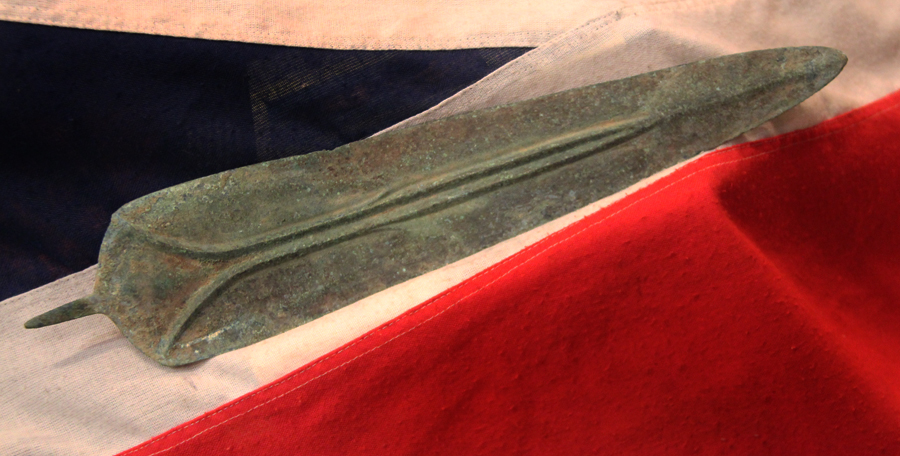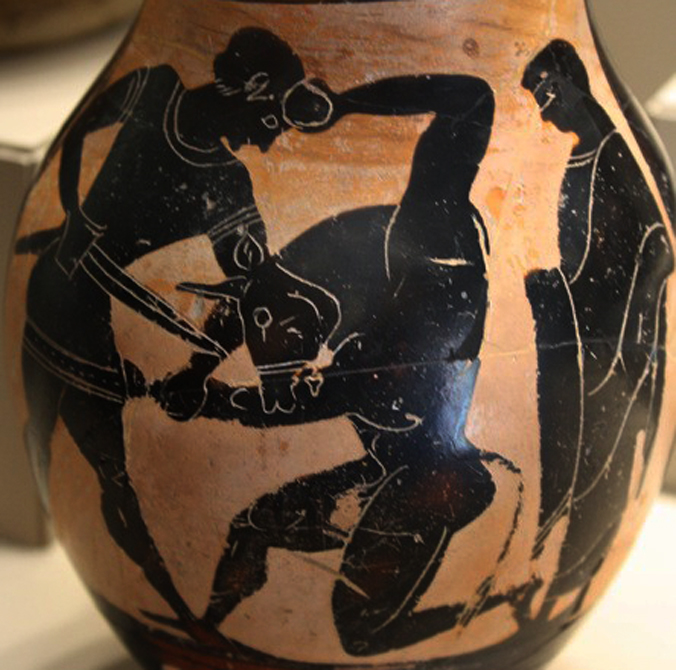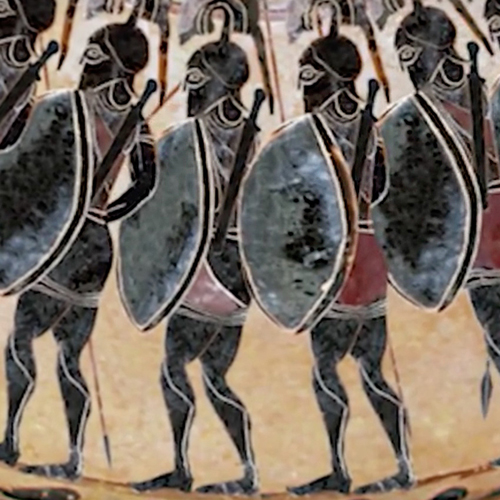A Simply Stunning Ancient & Historical Era Greek Leaf Shaped Bronze Sword With a Distinctive Blood Channel. From the Most Iconic Period Of Ancient Greek Classical History. Around 3200 Years Old
A wonderful original artefact of classical history, made and used by a Greek warrior from circa 1200 b.c. A Superb ancient Greek bronze age sword blade with fabulous areas of crystallised malachite blue/green patina. From the era of the legendary Mycenaean Greek Trojan Wars.
The story of the Trojan War the Bronze Age conflict between the kingdoms of Troy and Mycenaean Greece straddles the history and mythology of ancient Greece and inspired the greatest writers of antiquity, from Homer, Herodotus and Sophocles to Virgil. Since the 19th-century rediscovery of the site of Troy in what is now western Turkey, archaeologists have uncovered increasing evidence of a kingdom that peaked and may have been destroyed around 1,180 B.C. perhaps forming the basis for the tales recounted by Homer some 400 years later in the Iliad and the Odyssey. According to classical sources, the war began after the abduction (or elopement) of Queen Helen of Sparta by the Trojan prince Paris. Helen’s jilted husband Menelaus convinced his brother Agamemnon, king of Mycenae, to lead an expedition to retrieve her. Agamemnon was joined by the Greek heroes Achilles, Odysseus, Nestor and Ajax, and accompanied by a fleet of more than a thousand ships from throughout the Hellenic world. They crossed the Aegean Sea to Asia Minor to lay siege to Troy and demand Helen’s return by Priam, the Trojan king. The siege, punctuated by battles and skirmishes including the storied deaths of the Trojan prince Hector and the nearly-invincible Achilles, lasted more than 10 years until the morning the Greek armies retreated from their camp, leaving a large wooden horse outside the gates of Troy. After much debate (and unheeded warnings by Priam’s daughter Cassandra), the Trojans pulled the mysterious gift into the city. When night fell, the horse opened up and a group of Greek warriors, led by Odysseus, climbed out and sacked the Troy from within. After the Trojan defeat, the Greeks heroes slowly made their way home. Odysseus took 10 years to make the arduous and often-interrupted journey home to Ithaca recounted in the Odyssey. Helen, whose two successive Trojan husbands were killed during the war, returned to Sparta to reign with Menelaus. After his death, some sources say she was exiled to the island of Rhodes, where a vengeful war widow had her hanged.
Photo in the gallery of an Attic black figure vase that shows Theseus killing the Minotaur of the Cretan labyrinth with an identical pattern of Greek sword. A feminine figure looks on from the right, possibly Ariadne. Late 6th, early 5th century BCE. (Archaeological Museum, Milan). See discussion in Branigan, K. Aegean Metalwork of the Early and Middle Bronze Age, Oxford, 1974, p.8-21. 15.5 inches long overall
Every item is accompanied with our unique, Certificate of Authenticity. Of course any certificate of authenticity, given by even the best specialist dealers, in any field, all around the world, is simply a piece of paper,…however, ours is backed up with the fact we are the largest dealers of our kind in the world, with over 100 years and four generation’s of professional trading experience behind us
Code: 22069
2750.00 GBP









